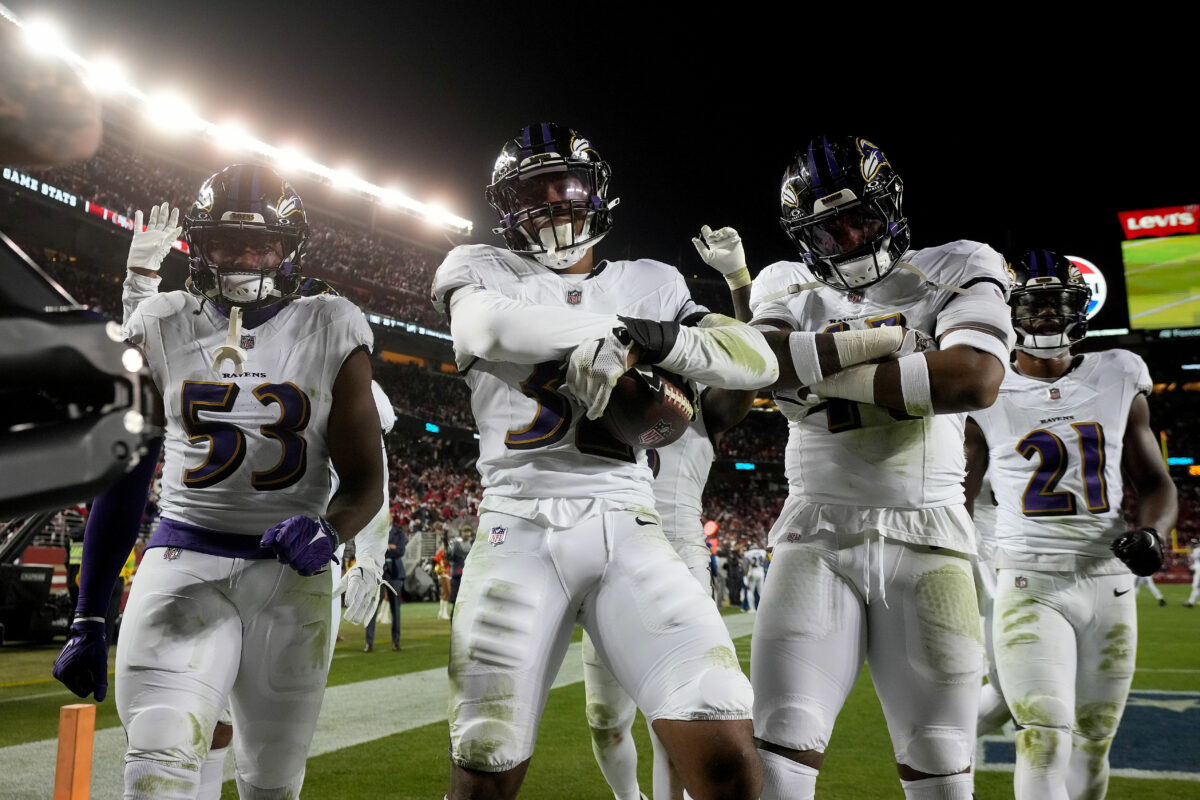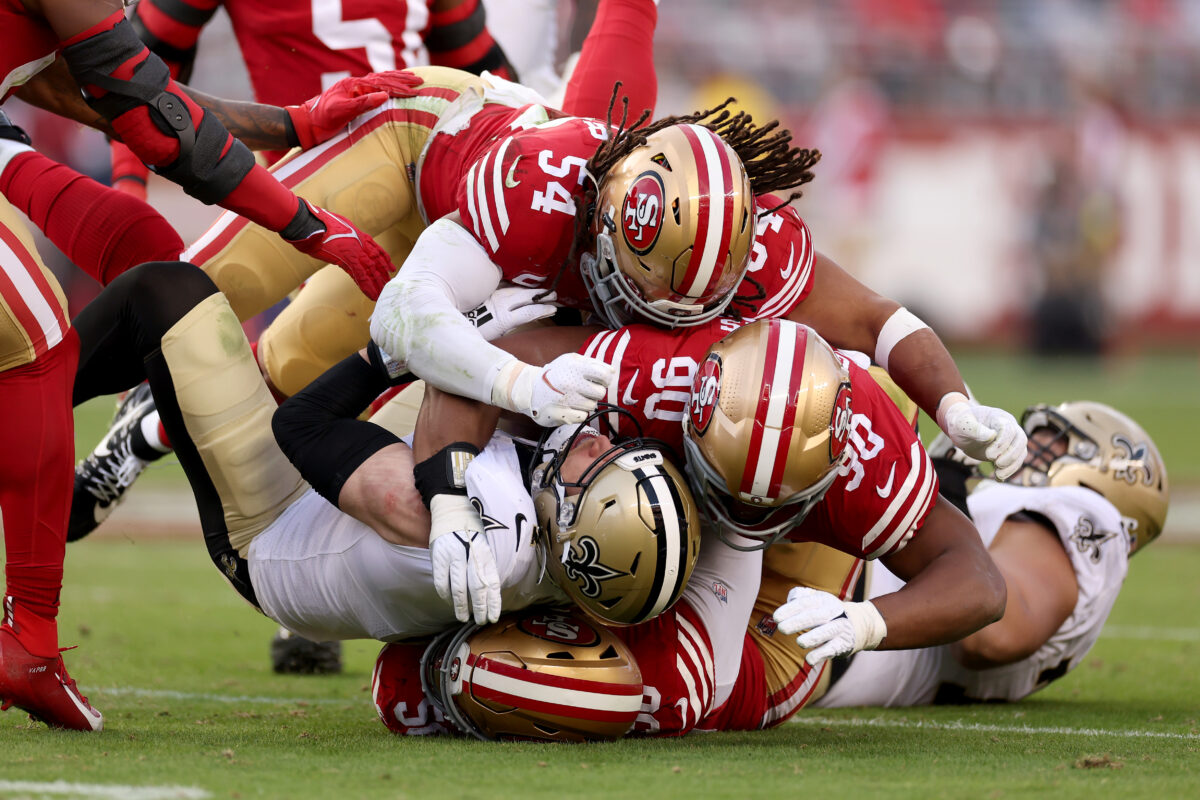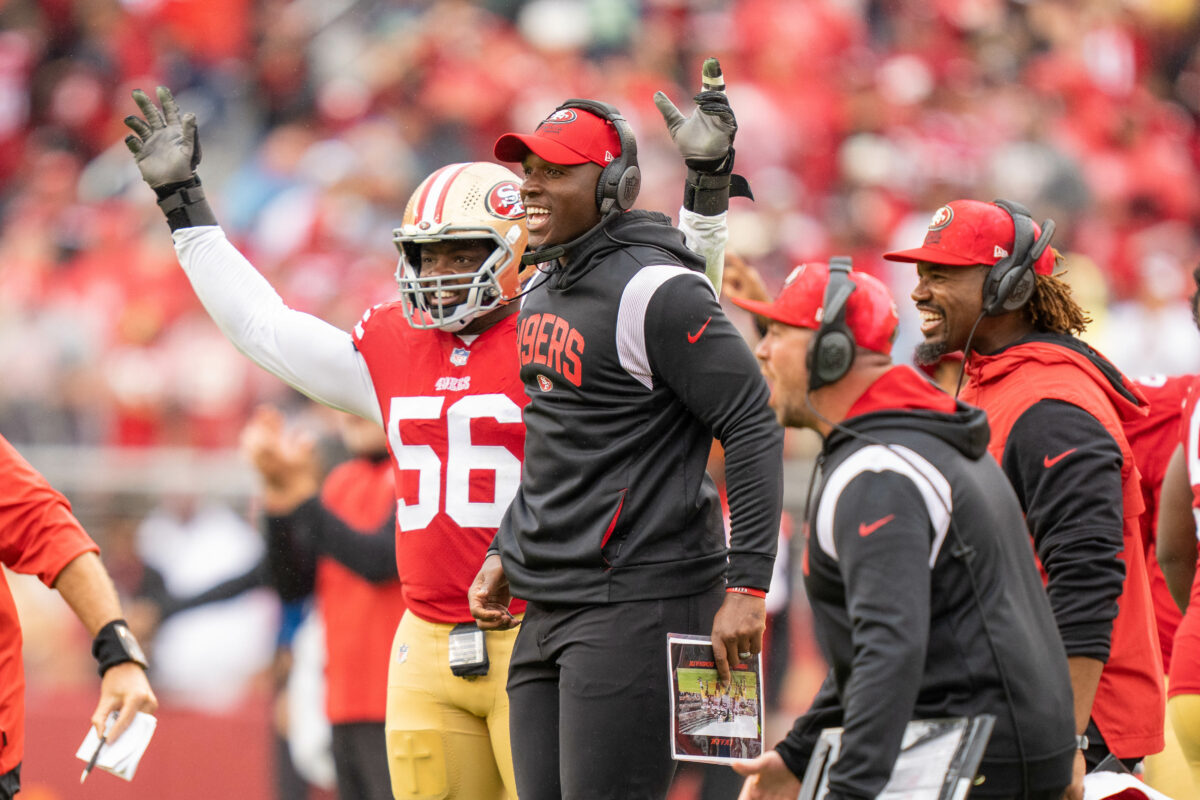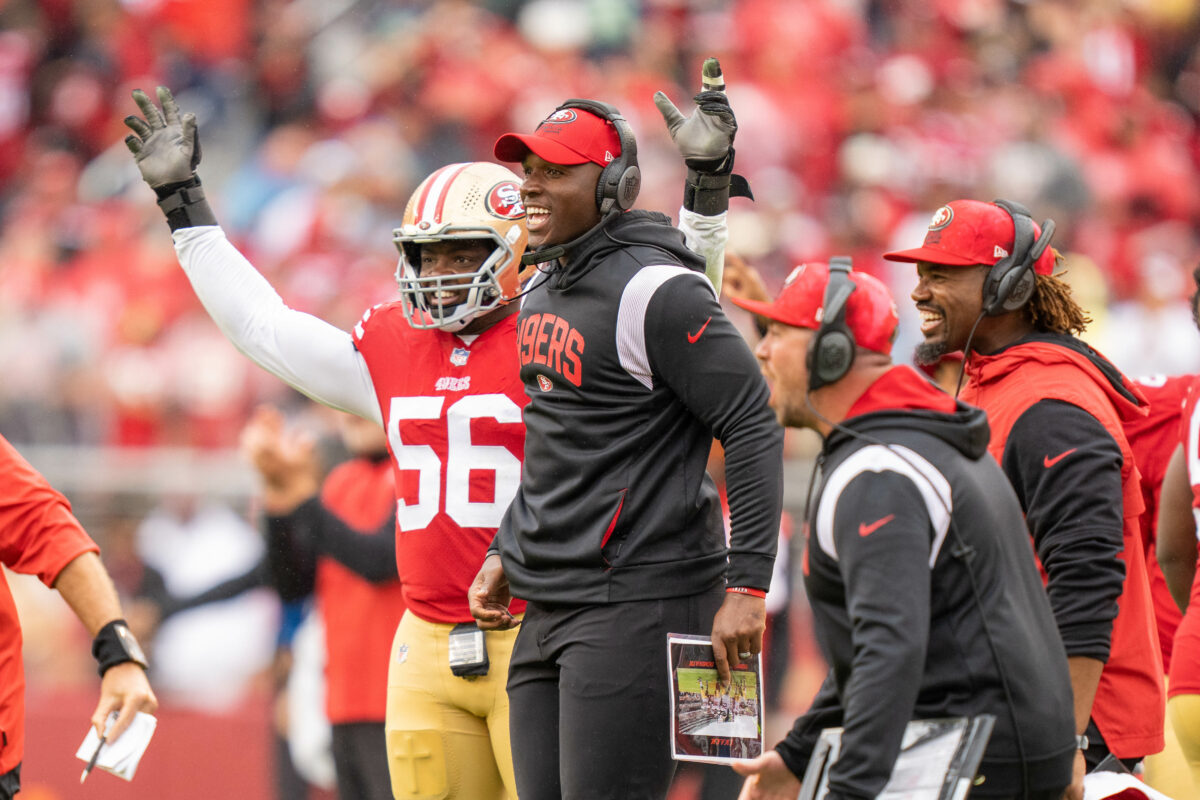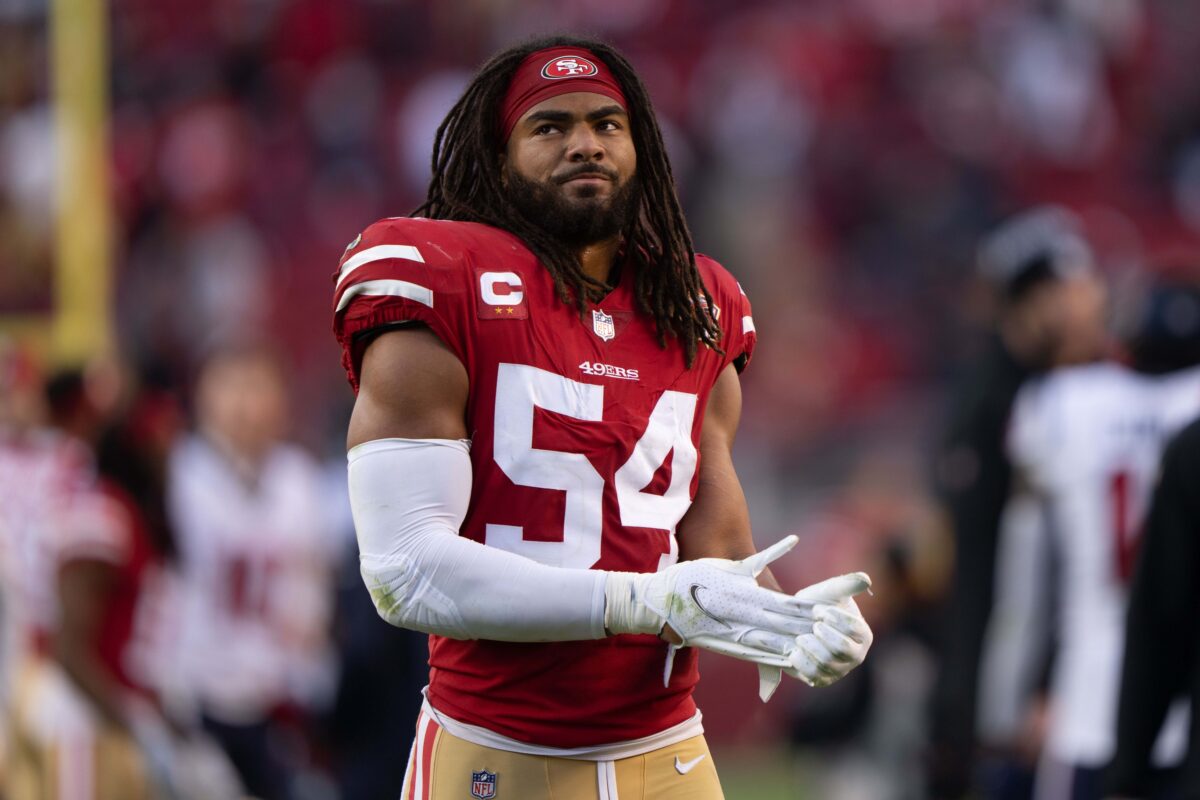Touchdown Wire’s Laurie Fitzpatrick breaks down film to explain why 49ers linebacker Fred Warner is so valuable.
The San Francisco 49ers improbably have earned a spot in the NFC Championship Game.
The sixth-seeded Niners were road underdogs against the Dallas Cowboys and Green Bay Packers. Undeterred, San Francisco won those games by six and three points, respectively.
Now, the Niners meet a familiar foe in the NFC West-rival Los Angeles Rams with a trip to Super Bowl LVI at stake.
San Francisco’s defense is playing at a high level, having only allowed three touchdowns in those two games. Aaron Rodgers and the Packers only reached the end zone once last week, and when we dove into the film, we saw why. The secret to the 49ers’ defensive scheme went through middle linebacker Fred Warner.
Last week, Warner and defensive end Nick Bosa were graded as the top defenders of the game by Pro Football Focus.
As PFF’s Seth Galina pointed out, for the entire game, the Niners’ defensive tackles lined up in 2i technique (off the center) forcing the double-team and freeing up the A gap for Warner to penetrate.
Most zone-blocking schemes use double-teams when running the ball up the middle, as the linemen work up to the second level of the defense.
The great thing about zone blocking is that if the running back has good vision and patience, the ground game can be extremely efficient. The downside is if you are playing a team with flexible defensive tackles, the defense can essentially open the lanes that it chooses depending on where its players line up. Once a gap is opened up from a double-team, the offensive linemen won’t have time to work their way up to the second level with a linebacker coming through the middle — as seen in the clip above.
Back in Week 18, the Rams offense ran similar plays. In the clip below, they clog the middle with blockers. But Warner switches to the B gap and makes the tackle, anyway.
One of the main differences between the first clip and the second was how motion shifted the linebackers, leaving the A gap devoid of defenders. If ball carrier Sony Michel would have cut to the outside, he may have had success against nickel cornerback Dontae Johnson as left guard David Edwards was working his way upfield.
A few weeks later, Warner no longer shifts, giving the offense no open lanes for the tailback.
Below is an example of Warner and weak-side linebacker Dre Greenlaw moving together on a string to keep the gaps plugged.
Over the course of the season, many of the Rams’ most successful run plays went to the outside. So the Rams might try to get between the ends and tackles (C gap) along the 49ers’ wide-nine defensive line.

Last week, Warner received the highest PFF grade of his career, 94.2. This grade was deserved not only because he dominated in stopping the run. He used the same aggressiveness and anticipation in the screen game as well.
In the clip below, Warner’s responsibility in coverage was to pick up tailback Aaron Jones escaping into the flat. But as soon as he notices the offensive linemen getting upfield, he no longer waits to be blocked. Instead, he engages Jones as the ball arrives from Rodgers.
We saw how Warner can be a force up the middle against the run and his aggressiveness when identifying a screen pass. Now let’s move on to the downfield passing game, where Warner’s coverage flexibility really is something special.
One of the best receivers in football right now, Cooper Kupp, is someone Warner will have to monitor when dropping back into zone coverage against the Rams — because the Niners can’t afford to give up big plays downfield.
On Sunday, expect to see Warner drop back into coverage with his eyes on Kupp. This will give the Niners’ defensive line time to apply pressure and try to force Stafford into bad throws. This is what led to an interception by the Niners defense in Week 18.
Similar to the clip above, last week against the Packers, Warner was aware of Green Bay’s No. 1 receiver, Davante Adams, who was running a crosser over the middle of the field.
Warner stays in the line of vision between Adams and his quarterback, forcing Rodgers to dump the ball off to tight end Marcedes Lewis. Warner then forced Lewis to fumble, and Greenlaw recovered. Turnovers such as these can change the complexion of a game.
Not only does Warner have good acceleration, but he also can drop into a deep quarter or third when asked.
Warner’s fluid hips and speed allow him to keep up with just about any tight end in the league. During this postseason, Warner ranks second overall among linebackers in pass coverage, with an 88.5 PFF grade when dropping back in man defense.
If the Rams come out in an empty set, expect Warner to cover tight end Tyler Higbee as he goes deep. This will be a key man-coverage matchup to look for. When Warner drops into zone coverage, he will be looking to help bracket Kupp as he runs across the middle of the field. (Bracketing is when one defender is high, above the receiver, and another defender is low, in front).
If the Niners are to beat the Rams on Sunday, the San Francisco defense must play a big role — and the Rams would be wise to account for Warner in both the passing and run game.

